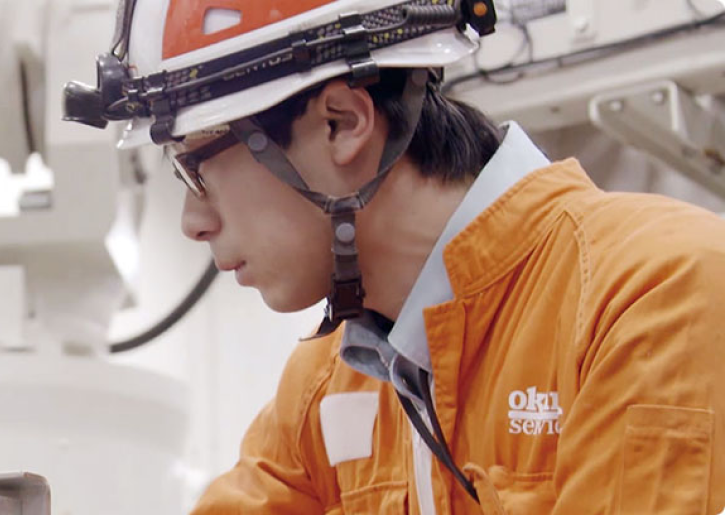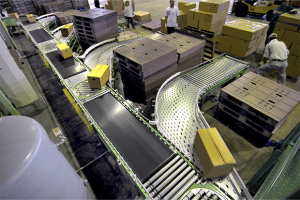
Introduction
Conveyor belts are crucial for many industries, efficiently transporting materials across diverse settings. From factories to other operational settings, these systems play a vital role in maintaining productivity and profitability. Additionally, based on our previous article, we discussed the different types of conveyor belts, and how each type can help improve your operational needs. From Motor Roller to Vertical conveyors, they each offer a unique solution that can help you based on your specific needs.
However, each type of conveyor system can succumb to issues, leading to disruptions in material flow and potentially impacting your bottom line.
This blog delves into the topic of conveyor belt troubleshooting, equipping you with the knowledge to identify and address common problems. By adopting proactive maintenance strategies and staying informed about advancements in technology, you can ensure your conveyor systems operate smoothly and maximise their lifespan.
Common Conveyor Belt Problems
Conveyor belts can encounter various challenges, each with its own impact on system performance. Keeping a close eye on your conveyor belt will allow you to notice some of these issues before they become worse, ensuring that you can troubleshoot with ease.
To help you remain informed, here are some of the most frequently encountered issues:
- Misalignment: Misaligned belts can rub against components, causing premature wear and tear, energy loss, and even belt damage. This can manifest as uneven wear patterns or material spillage.
- Belt Slipping: Slipping occurs when the belt loses traction on the drive pulley, reducing its ability to transport materials effectively. This can be caused by insufficient tension, worn pulleys, or material overload.
- Excessive Wear: Belts naturally wear over time, but excessive wear can indicate underlying issues like misalignment, improper tension, or abrasive materials. This can lead to belt failure and production downtime.
- Electrical Malfunctions: Faulty sensors, motor issues, or control panel malfunctions can disrupt the entire conveyor system operation, leading to unexpected shutdowns and lost production time.
If you ignore any of these common issues, you may be looking at operational disruptions that could potentially hurt your overall business. Here are some of the repercussions that occur if you do not act with haste if you notice one of these issues:
- Reducing Efficiency: Material flow disruptions can hinder production speed and output.
- Increasing Maintenance Costs: Addressing problems reactively is often more expensive than preventive maintenance.
- Safety Hazards: Misaligned belts and worn components can pose safety risks to workers.

Troubleshooting Your Conveyor Belt System
Thankfully, there are various methods to troubleshoot your conveyor belt. Despite the fact that some of these may seem daunting, employing the following troubleshooting methods will help prevent material issues, while also saving you some time and trouble:
Mechanical Troubleshooting:
Visual inspection: Regularly inspect belts, pulleys, rollers, and frames for signs of wear, misalignment, or damage.
Belt tension adjustment: Ensure proper belt tension using tensioners or take-up pulleys.
Cleaning and lubrication: Remove debris and lubricant components according to manufacturer recommendations.
Component replacement: Replace worn or damaged pulleys, rollers, and other components promptly.
Electrical Troubleshooting:
Check control panel indicators and alarms: Identify any error codes or malfunction notifications.
Inspect wiring and connections for damage or loose connections.
Consult qualified electricians for complex electrical issues.
Operational Troubleshooting:
Review loading practices: Ensure material is loaded evenly and within weight capacity limits.
Adjust belt speed and tension based on material characteristics.
Train personnel on proper operating procedures and safety protocols.

Conveyor Belt Tracking Troubleshooting:
To avoid conveyor belt tracking issues, follow some these methods:
Material, Debris, and Buildup: Meticulously examine the belt and its path for any lingering product residue, debris build-up, or sticky substances. These contaminants can negatively impact belt tracking, tension, and overall performance. Remove any unwanted materials to ensure smooth operation.
Frame Levelness and Squareness: Check the conveyor frame for any signs of misalignment or unevenness. A level and square frame is essential for maintaining proper belt tracking and preventing premature wear. Address any deviations promptly to guarantee optimal performance.
End Pulley Alignment: Closely inspect the end pulleys, ensuring they are perfectly square and parallel to each other. Misaligned pulleys can create uneven tension and belt tracking issues, leading to potential damage and inefficient operation. Make necessary adjustments to achieve precise alignment.
Belt Cut Integrity: Verify that the conveyor belt has been cut precisely and uniformly. An unevenly cut belt can significantly impact tracking, causing uneven wear and potential tears. If necessary, consult a qualified professional for proper belt cutting and splicing.
Preventive Maintenance Strategies:
The key to minimising conveyor belt issues lies in proactive maintenance. Implementing a regular maintenance schedule can save you time, money, and headaches in the long run. Following some key strategies to maintenance will ensure your conveyor belt is up and running in no time.
Firstly, you must ensure that you schedule regular inspections with your conveyor belt provider. They could conduct thorough inspections weekly, monthly, or depending on your operation’s usage frequency.
Additionally maintaining proper lubrication is crucial to ensure your conveyor belt is running smoothly. Following your manufacturer’s recommendations for lubrication schedules will keep your system working at optimal levels.
If your manufacturer is not able to make it in time to restart your operations, you should also implement a training program. Train personnel on proper operating procedures and safety protocols.
You should also keep a detailed maintenance record. Track inspections, repairs, and replacements for future reference to ensure your operation does not stop abruptly.
Latest Industry Practices in 2024
The conveyor belt industry isn’t content to simply move packages and materials; it’s constantly innovating to move smarter and more efficiently. In 2024, this spirit of advancement is translating into exciting developments that promise to revolutionise conveyor system maintenance and performance.
One significant leap forward is the embrace of predictive maintenance. This sophisticated approach leverages a network of sensors embedded throughout the conveyor system, coupled with powerful data analytics. By analysing real-time data on vibration, temperature, and other critical parameters, these systems can anticipate potential issues before they cause costly downtime. Imagine, instead of waiting for a belt to break, receiving an alert weeks in advance, allowing you to schedule a quick fix and avoid production disruptions.
Taking innovation even further, we’re witnessing the rise of smart belts. These belts aren’t just passive movers; they’re actively collecting data through embedded sensors. This real-time feedback on tension, alignment, and temperature provides invaluable insights into the belt’s health and performance. Imagine being able to remotely monitor your entire conveyor network, pinpointing potential problems in real-time and adjusting settings from your control room.
Augmented reality (AR) is also making its mark on the conveyor belt landscape. Imagine a technician struggling to pinpoint a complex issue within the system. With AR, they can don a headset and overlay digital instructions and visualisations onto the physical equipment. This technology not only streamlines troubleshooting, but also reduces training time and empowers technicians to tackle intricate problems with confidence.
Conclusion
By understanding common conveyor belt issues, implementing proactive maintenance strategies, and staying informed about the latest advancements, you can ensure your material flow runs smoothly and efficiently. Remember, a well-maintained conveyor system is a productive and profitable conveyor system. Take charge of your conveyor belt health today and optimise your operations for long-term success.


